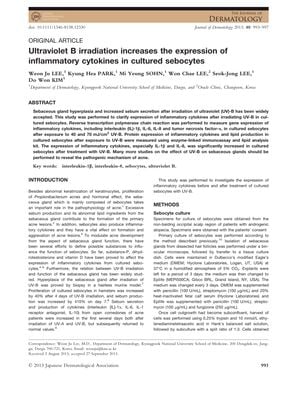Ultraviolet B Irradiation Increases the Expression of Inflammatory Cytokines in Cultured Sebocytes
December 2013
in “
Journal of Dermatology
”

TLDR UV-B light increases inflammation-related substances in acne-related skin cells.
The study from December 2013 examined how UV-B irradiation affects the inflammatory response in sebocytes, the cells in sebaceous glands associated with acne. Researchers exposed the cells to UV-B at 40 and 70 mJ/cm² and measured the expression of inflammatory cytokines IL-1ß, IL-6, IL-8, and TNF-α at intervals of 1, 3, and 5 days post-irradiation. They observed a significant increase in the expression of IL-1ß and IL-8, with IL-6 gene expression also rising significantly at the higher UV-B dose. However, lipid production in the sebocytes did not change significantly after UV-B exposure. These findings suggest that UV-B irradiation may contribute to acne by enhancing inflammatory responses in sebocytes, but the relationship between UV-B and sebaceous gland function remains complex and warrants further research.










